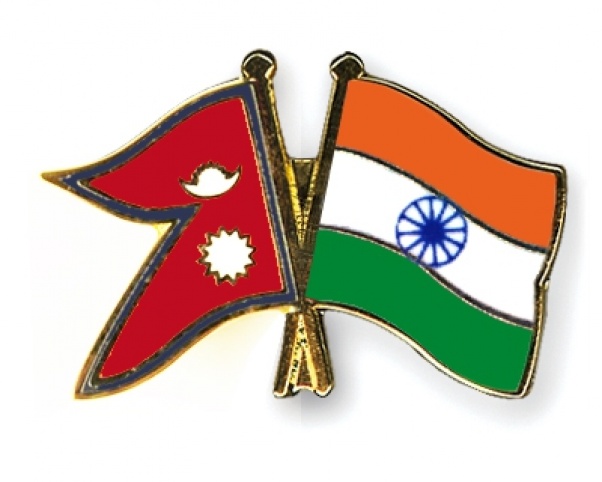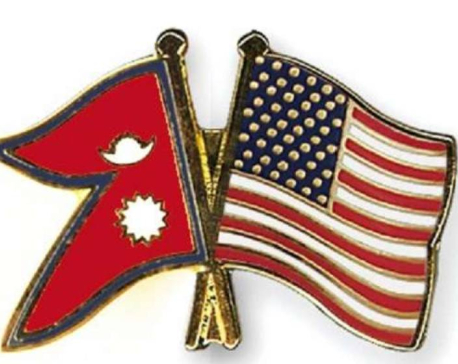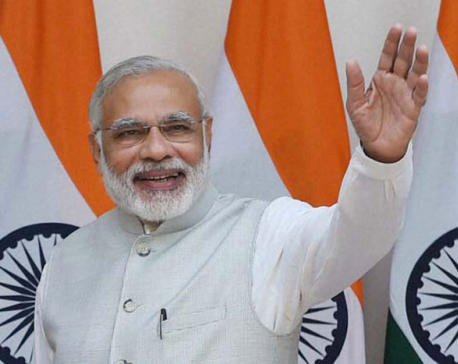
OR
Opinion
Unraveling the Tapestry: The Nuanced Relations between Nepal and India
Published On: June 23, 2023 09:00 AM NPT By: Nabraj Lama


Nabraj Lama
The author is a research scholar with a primary focus on Himalayan Studies, international relations, political economy, and Indigenism. He is affiliated with the Himalayan Strategic Institute.news@myrepublica.com
More from Author
- Strengthening Indigenous Rights: Key to Peace and Prosperity in Nepal's Federal Era
- Unavoidable Realism of Nepal’s Geopolitical Strategy
- Nepal's 1923 Treaty with British India: A Centennial Reflection on Diplomatic Resilience and Sovereignty
- India's Role in South Asia: Pathways to Regional Prosperity and Peace
- The Unequal Balance of Power: Kathmandu's Dual Standard on Rule Enforcement
The historical relationship between Nepal and India forms a dynamic tapestry, interwoven with vibrant threads of shared cultural, religious, and ecological ties. Nestled in the cradle of the Himalayas, these two nations have fostered a deep-rooted bond that transcends mere geographic proximity. Despite this profound interconnectedness, they have faced a spectrum of contentious issues that have occasionally marred their relations, underlining the complexity and intricacy of this unique Indo-Nepalese bond.
As we unravel this tapestry, a myriad of elements come into focus - an interplay of history, culture, politics, and geography that illustrates the symbiotic yet sometimes tumultuous relationship between these countries. The tapestry showcases close diplomatic, economic, and cultural cooperation, reflective of their shared past and symbiotic present. At the same time, it exposes the frayed edges - misrepresentations of shared history, territorial disputes, perceived infringements on sovereignty, and socio-cultural disagreements that have occasionally marred this camaraderie.
In this article, I venture into a detailed exploration of these major instances of discord, scrutinizing their implications on the Nepal-India relationship. Through this journey, I aim to underscore the need for a relationship that not only acknowledges the complexities but also nurtures the ties that bind these nations together, thereby preserving the rich, vibrant tapestry of Nepal-India relations for future generations.
The Birthplace of Buddha: The Intricate Ramifications of a Misperceived Origin:
Lumbini, a historic site nestled within the border of contemporary Nepal, holds the honor of being the birthplace of Siddhartha Gautama, universally recognized as the Buddha or the Enlightened one. This incontrovertible fact, however, has often been the subject of misrepresentation, casting a shadow over the shared cultural heritage of India and Nepal.
Back in 2007, an Indian scholar pursuing his doctoral studies in Japan, erroneously claimed Buddha to be an Indian by birth. His conviction was underpinned by the references inscribed in his textbooks, underscoring a systemic issue with the accuracy of the historical information being disseminated.
In an equally notable incident, the Indian External Affairs Minister, S. Jaishankar, stoked controversy with his remarks in August 2020, insinuating that Buddha was born in India. Despite the subsequent clarification, the damage had been done; the comment ignited a wave of criticism and further strained the already delicate diplomatic relations between Nepal and India.
These instances of historical distortion reveal a deep-seated issue that goes beyond mere errors in textbooks or slips of the tongue. They underscore the critical importance of maintaining historical integrity and factual accuracy in educational content and public discourse. More importantly, they underline the potential repercussions of such distortions - in this case, causing frictions in the bilateral relationship between Nepal and India.
The Bilateral Trade Corridors - A Question of Sovereignty and Consent
In 2015, a seemingly innocuous agreement between India and China to establish bilateral trade corridors sparked controversy, setting the stage for an international diplomatic dispute. The proposed corridors would traverse the Lipulekh pass, an area long contested by Nepal. As far as Nepal was concerned, this unilateral action disregarded its territorial claim and was seen as a breach of the Sugauli Treaty signed in 1816.
The Lipulekh pass, in the high Himalayas, has been at the heart of a protracted territorial dispute involving Nepal, India, and China. The decision by India and China to use this contentious territory for bilateral trade corridors, without Nepal's consent, was seen as a dismissive act, disrespecting Nepal's sovereignty.
In response, the Government of Nepal lodged formal protests, arguing that the move blatantly disregarded the treaty provisions. However, the appeals were met with what they perceived to be unsatisfactory responses, further exacerbating the situation. This episode in the Nepal-India relations underscored the fragility of trust between the two countries. The dispute over Lipulekh pass sowed seeds of mistrust among Nepalese towards India, adding another layer of complexity to the already intricate bilateral relations.
Road Construction on Controversial Land - Igniting Diplomatic Discord
May 2020 marked a crucial flashpoint in Nepal-India relations, characterized by the construction of a new access road through the disputed territory of Lipulekh pass by India. This unilateral move, executed without consultation with Nepal, sharply escalated diplomatic tensions between the two nations.
The Lipulekh pass, an area of long-standing contention, found itself at the heart of a renewed dispute when India inaugurated a new access road to shorten the travel time for pilgrims to Kailash Mansarovar. While this might have been an infrastructural advancement from India's perspective, Nepal viewed it as a flagrant violation of existing agreements. In Nepal's view, such significant developments on disputed land warranted bilateral discussion and agreement, not unilateral action.
The Controversial Political Maps - A Cartographic Conflict
The complex boundary dispute between Nepal and India found a new battleground in November 2019: the domain of cartography. The release of India's new political map, which incorporated disputed territories such as Kalapani, Lipulekh, and Limpiyadhura within its borders, triggered a fresh round of diplomatic tensions. The perceived disregard for long-standing territorial disputes in India's new map was seen as a direct challenge to Nepal's sovereignty.
In response to what was viewed as cartographic aggression, Nepal swiftly issued its own political map in May 2020. This new map reinstated Nepal's claim over the disputed territories, setting the stage for a diplomatic standoff often referred to as a "cartographic war." This tit-for-tat exchange of maps not only amplified the boundary dispute but also strained the otherwise close ties between the two nations.
The Greater India Map - A Controversial Mural
In the realm of international relations, even cultural and artistic representations can trigger controversies, as illustrated by the furore caused by a mural in the newly inaugurated Indian Parliament building. The mural, which depicts an expanded Indian subcontinental landmass inclusive of Nepalese territory, stirred a significant uproar in Nepal.
The contentious mural was perceived as a visual embodiment of the concept of Akhand Bharat or undivided India. This controversial concept envisions a unified Indian subcontinent encompassing various countries, including Nepal. By including Nepalese territory within the Indian landmass, the mural was viewed as a symbolic infringement of Nepal's sovereignty, thereby intensifying the existing diplomatic tensions.
This incident underscores how critical it is for nations to show respect for each other's sovereignty, not just in political or territorial terms, but also in cultural and artistic manifestations. Art and culture often hold a mirror to society, reflecting prevailing attitudes and perceptions. Hence, sensitivity towards representations that impact national integrity is paramount.
The Adipurush Movie Controversy - Cinematic Diplomacy
Cinema, a powerful medium that transcends national boundaries, recently found itself in the crosshairs of a diplomatic controversy between Nepal and India. The Hindi film 'Adipurush' triggered a significant backlash in Nepal due to a dialogue that inaccurately claimed Janaki, known as Sita in the Indian epic Ramayana, as a 'daughter of India.' The problem arises from the fact that Janaki, according to mythological lore and cultural understanding in Nepal, is revered as a daughter of Nepal.
In Kathmandu, this misrepresentation led to protests and calls for the banning of the film, showcasing how deeply such cultural inaccuracies can affect public sentiment. While from a broader perspective, it might seem a minor issue, it significantly impacted the collective sentiment in Nepal, who viewed it as another example of cultural appropriation by India.
In an era of global cultural exchange, it's crucial for filmmakers and media creators to consider the historical and cultural implications of their content, particularly when dealing with characters or stories of shared heritage. Sensitivity towards these aspects is not just an ethical responsibility; it is also a prerequisite for fostering mutual respect and understanding between nations. The 'Adipurush' controversy serves as a powerful reminder of this reality.
In conclusion, the intricate fabric of Nepal-India relations, woven over centuries with threads of shared history, culture, religion, and ecology, is indeed a marvel in South Asian geopolitics. These ties are rich and deep-rooted, forming an enduring bond between the two nations. However, these long-standing relations have been strained by issues that spotlight the need for mutual respect, accurate representation of shared history, and steadfast adherence to diplomatic norms.
The instances examined in this discussion - ranging from misrepresentation of the birthplace of Buddha to territorial disputes, and from provocative art installations to inaccuracies in popular cinema - have all played their part in souring the otherwise congenial relationship. They underline the importance of respectful engagement in the multifaceted interactions between nations.
The responsibility to mend these rifts lies with both nations, necessitating a balanced approach to diplomatic dialogue. Nepal's politicians should articulate their concerns with assertiveness, bringing these matters to the negotiating table with clarity and conviction. Meanwhile, India, as the larger and more powerful neighbor, has the onus to ensure its actions respect Nepal's sovereignty and are sensitive to its sentiments.
A peaceful, mutually beneficial future requires this delicate balancing act between asserting national pride and maintaining diplomatic grace. As two nations bound by deep historical ties, they should leverage their shared cultural heritage and mutual interdependence to foster a relationship that stands as a testament to unity in diversity, thereby setting an example for the rest of the world. The Nepal-India tapestry, with its complex patterns and rich hues, is far too valuable to be frayed by misunderstandings and misrepresentations. It deserves to be carefully preserved, nurtured, and celebrated for its unique intricacy and shared legacy.
You May Like This

American Interests in Nepal
Nepal, as a land-linked nation between the two emerging global powers China and India, draws the attention of the superpowers... Read More...

Praise for Vajpayee from among Nepal's Who’s Who
KATHMANDU, Aug 18: As the last rites of former Indian Prime Minister and veteran Bharatiya Janata Party (BJP) leader Atal... Read More...

Nepal good friend of India: Deuba, India ready to support Nepal's development: Modi
NEW DELHI, Aug 24: Prime Minister Sher Bahadur Deuba, who is currently on a five-day state visit of India, said... Read More...









Just In
- Forced Covid-19 cremations: is it too late for redemption?
- NRB to provide collateral-free loans to foreign employment seekers
- NEB to publish Grade 12 results next week
- Body handover begins; Relatives remain dissatisfied with insurance, compensation amount
- NC defers its plan to join Koshi govt
- NRB to review microfinance loan interest rate
- 134 dead in floods and landslides since onset of monsoon this year
- Mahakali Irrigation Project sees only 22 percent physical progress in 18 years









Leave A Comment